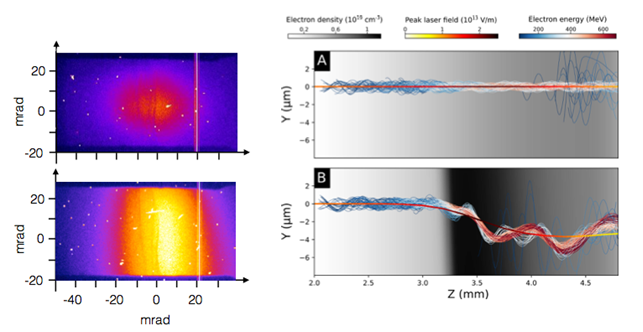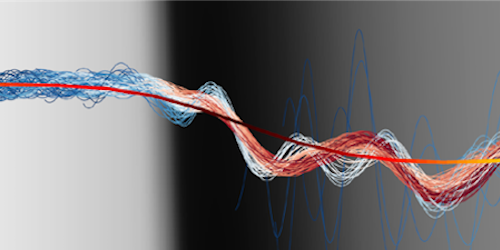Structured Plasma Boosts X-Ray Flux
High-intensity sources of femtosecond x-ray pulses are a must-have tool for studying ultrafast processes. Unfortunately, only a handful of kilometer-long free-electron lasers can produce these pulses, making them inaccessible to most researchers. Now, Michaela Kozlova at the Czech Academy of Sciences, Prague, and colleagues demonstrate improvements to an alternative, tabletop x-ray emitter—a laser-based scheme known as a wakefield accelerator—that could make such capabilities more broadly available.
In a wakefield accelerator, a femtosecond laser pulse travels through a plasma, pushing electrons away from its path and forming intense plasma waves in its wake. Electrons “surfing” on these waves are accelerated to relativistic speeds. They also wiggle around the laser-beam axis, emitting x rays whose frequency and intensity depend on the electrons’ speed and on the frequency and amplitude of their oscillations.
Previously, high-energy x-ray sources employing this technique required impractical lasers that output hundreds of terawatts. Kozlova and colleagues achieved similar results with a much smaller terawatt-class laser by tailoring the density of the laser-generated plasma. First, a gradual density increase in the direction of laser propagation increased the electrons’ speed and oscillation frequency. Second, a sharp density variation along a direction angled diagonally with respect to the beam axis increased the electrons’ oscillation amplitude. The two effects boosted the total x-ray flux tenfold compared to a homogeneous plasma, with a 100-fold improvement at hard x-ray wavelengths. The modified device produced x-ray pulses with a broad spectrum of frequencies that are suitable for performing ultrafast x-ray absorption spectroscopy experiments. These experiments enable the observation of changes in atomic and electronic structures occurring on femtosecond timescales.




